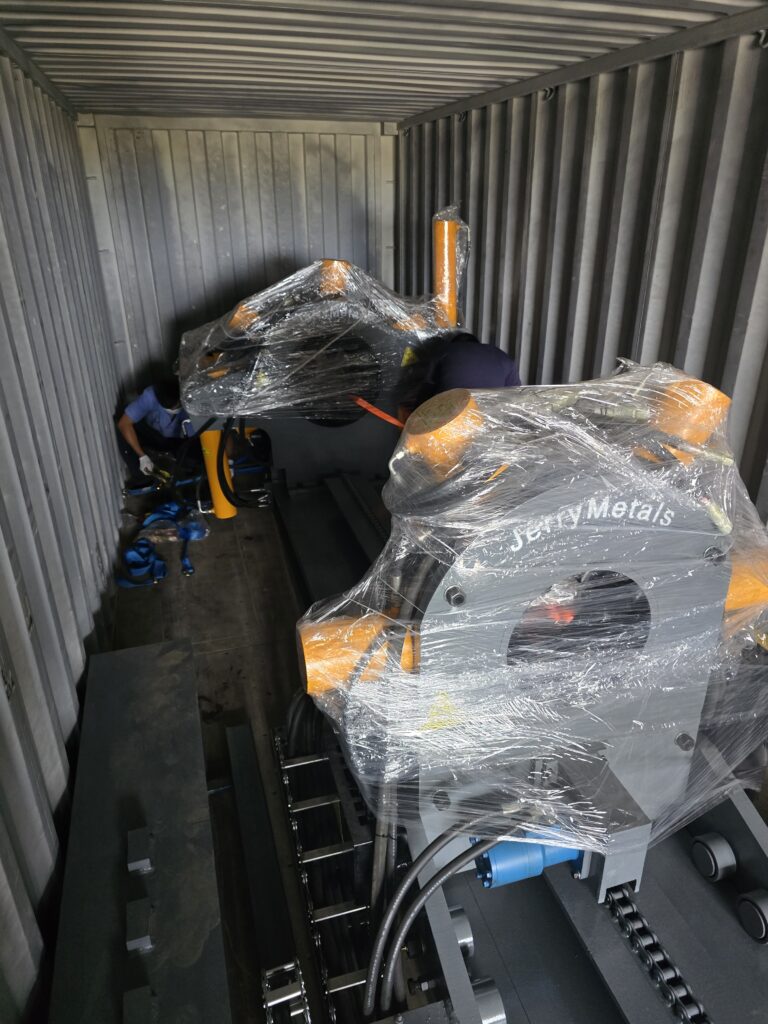
In the world of oilfield services, efficiency and precision are everything. One piece of equipment that’s been gaining ground in this respect is the hydraulic bucking unit for tubular connections. This machine has become an essential tool for assembling and disassembling tubular connections, ensuring safe and secure joints under high torque conditions. Whether you’re in a pipe yard or managing oilfield operations, integrating a hydraulic bucking unit can save time, reduce manual effort, and enhance safety.
Why Hydraulic Bucking Units?
Hydraulic bucking units are specifically designed for handling tubular connections, which are essential in both upstream and downstream oilfield operations. These units can handle pipes of various diameters and lengths, applying precise torque to ensure secure connections without over-stressing the pipe or damaging threads.
But what makes these machines so efficient?
- Speed and Accuracy: Hydraulic bucking units can quickly apply or release torque on tubular connections. This reduces the time taken for manual handling and minimizes the chances of human error.
- Consistent Torque Control: These units feature advanced control systems that ensure accurate, consistent torque application. This is critical for ensuring secure connections in high-stress environments such as drilling operations.
- Reduced Pipe Damage: The ability to handle pipes with non-marking jaws (optional in some units) means that even delicate, corrosion-resistant alloy pipes can be worked on without the risk of damage.
Key Features of Hydraulic Bucking Units
1. High Torque Capacity
Hydraulic bucking units are engineered to deliver high torque, which is essential for making up or breaking down tubular connections. Depending on the unit, these machines can apply torque ranging from 5,000 ft-lbs to upwards of 60,000 ft-lbs, allowing them to handle even the most challenging oilfield tasks.
2. User-Friendly Interface
Many hydraulic bucking units come with touchscreen controls and customizable presets, making them easy to operate for field personnel. The interface allows operators to input pipe specifications and thread types, and the system automatically adjusts the torque parameters.
3. Precision and Safety
These units also offer enhanced safety features, such as torque and turn monitoring, allowing operators to track the exact number of rotations and torque applied during make-up operations. Additionally, they include emergency stop buttons and safety shields to prevent accidents during operation.
Applications in the Oilfield
Bucking units are vital for:
- Makeup and Breakout of Drill Pipes: When drilling, precision is needed to ensure that each pipe joint can handle the extreme stress it will encounter. Hydraulic bucking units ensure this precision.
- Completion and Workover Operations: These units help in assembling and disassembling connections during completion, reducing downtime in critical operations.
- Pipe Testing: The equipment can also be used to test the strength and accuracy of tubular connections before they go into the field.
Benefits of Using a Hydraulic Bucking Unit
- Improved Operational Efficiency: Hydraulic bucking units reduce manual labor and increase the speed of pipe assembly, allowing for faster setup and reduced downtime.
- Increased Safety: Hydraulic systems provide controlled torque application, which minimizes the risk of over-tightening or pipe failure. With integrated safety features like pressure regulators and automatic shutdowns, these units protect workers from high-pressure fluid leaks and mechanical failures.
- Lower Maintenance Costs: Hydraulic bucking units are known for their durability and minimal maintenance requirements. Their design includes features like automatic torque calibration and real-time monitoring systems, reducing the need for frequent adjustments.
- Environmental Benefits: Many hydraulic units now come with air-cooled radiators and other eco-friendly features that reduce the need for excessive energy use while keeping the machine within optimal operating temperatures.
Conclusion
Hydraulic bucking units are the backbone of modern oilfield operations when it comes to tubular connections. Their precision, power, and ability to safely handle high torque make them indispensable in ensuring that every joint and connection is made up to exact specifications. If you’re looking to increase efficiency, reduce pipe damage, and ensure consistent performance in your operations, investing in a hydraulic bucking unit is the way to go.